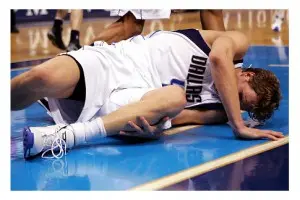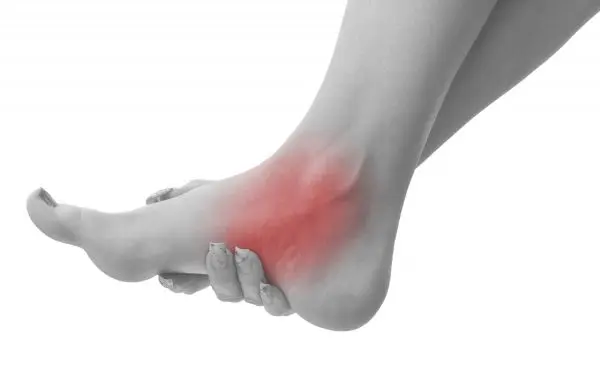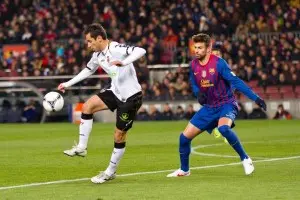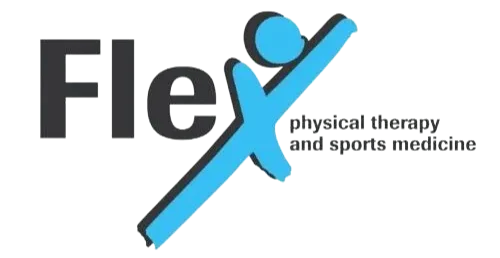Previously I wrote about the use of RICE treatments in treating a joint sprain. Ankle sprains are one of the most common joint sprains that I see in my practice. Ankle sprains occur usually by the rolling of the ankle inwards past its normal movement. If not properly treated, these common joint sprains can mean a lifetime of problems. An ankle sprain involves damage to the ligaments of the ankle, usually one of the three outside ligaments. The sprain may vary in severity from minor to requiring surgery. With a mild sprain (Grade 1), the ligament is mildly stretched and will result in little swelling or bruising. There may be some tenderness along the outside of the ankle. A moderate sprain (Grade 2), the ligaments have been partially torn and results in increased swelling, bruising, loss of movement, and trouble putting weight through the foot. A severe sprain (Grade 3) involves a complete tearing of the one or more of the ligaments, the ankle may feel unstable, very painful, increased swelling, bruising, and inability to put weight through the foot.

Immediate Care
The first thing to do when you suffer an ankle sprain is to stop your activity immediately and assess the severity of the injury. If the ankle sprain is mild to moderate, elevate the ankle and apply a light compression wrap to minimize the swelling. As ice has been shown to decrease pain, it is ok to use ice for a short period of time immediately after the injury. I would recommend applying ice no longer than 10 minutes, remove it for 20 minutes, and then reapply once. You should not ice more than 8 hours after the injury. The effectiveness of ice has been called into question in recent studies (see my previous blog Why RICE Treatments May Not Be the Answer for Ligament Sprains, October 1st, 2014). If the ankle sprain is severe, you should seek medical attention immediately to rule out a fracture. Do not take anti-inflammatory medication (ibuprofen or Aleve) as these medications have been shown to slow down the healing of ligament sprains. Instead, use Tylenol to control the pain.

Early Movement is Key
If the ankle sprain is a grade 1 or 2, early movement is key to proper healing. This should start within 48 hours of the injury. Here are some stretches/movements you can do 3-4 times a day:
- Alphabet- Trace the capital letters of the alphabet with the injured ankle A-Z.
- Circles- Make circles clockwise and counterclockwise with the ankle for 15 repetitions.
- Achilles stretches- Use a towel to pull back on toes and stretch the Achilles tendon. Hold for 5 seconds and repeat 10 repetitions.
- Standing Calf Raises- Start this once you can put full weight on the ankle. Do this by raising up on your tip toes and then back down. Start with 10 repetitions and work up to 30. Do this with two legs and work up to a single leg.
Balance and Proprioception
Once you are able to walk normally, it is important to develop the ankle’s ability to balance and control its movement. This is done through a process called proprioception. After an ankle sprain, the small nerve endings in the ankle which convey information to the brain about position are damaged. This affects your ability to maintain your balance and ankle control. Here are several activities you can do to improve this ability:
- Stand on one leg and try to keep your balance, use support if needed. Start with 15 seconds for 3 repetitions and work up to 1 minute.
- Stand on one leg with your eyes closed and try to keep your balance, use support as needed. Start 15 seconds for 3 repetitions and work up to 30 seconds.
- Stand on one leg on a pillow or piece of foam to challenge your balance. Start 30 seconds 3 repetitions and work up to 1 minute.
- Single leg windmills- Stand on one leg and hold opposite hand in the air. Bend forward and try to touch the opposite hand to the floor and return to an upright position keeping your balance.

Chronic Ankle Instability
After an ankle sprain, if the ankle is not fully returned to normal motion, strength, and balance/proprioception it is prone to re-injury. About 30-40% are re-sprained wit in 6 months. If the ligaments do not fully heal, there is a greater chance that further ankle sprains will occur. This can cause additional damage to the ligaments and cartilage resulting in further pain and possible arthritis.
What Else Can You Do?
Proper care and rehabilitation of an ankle sprain is the best way to make sure your will not have any further problems. Some people wear braces or tape their ankles to provide support. There is some evidence that a good fitting ankle brace and/or tape can be helpful in chronic ankle instability. If you continue to have trouble with pain or instability after an ankle sprain, our therapists specialize in getting you back in the game as soon as possible. Find relief and get back into the game. Call 1-800-930-8803 today.


